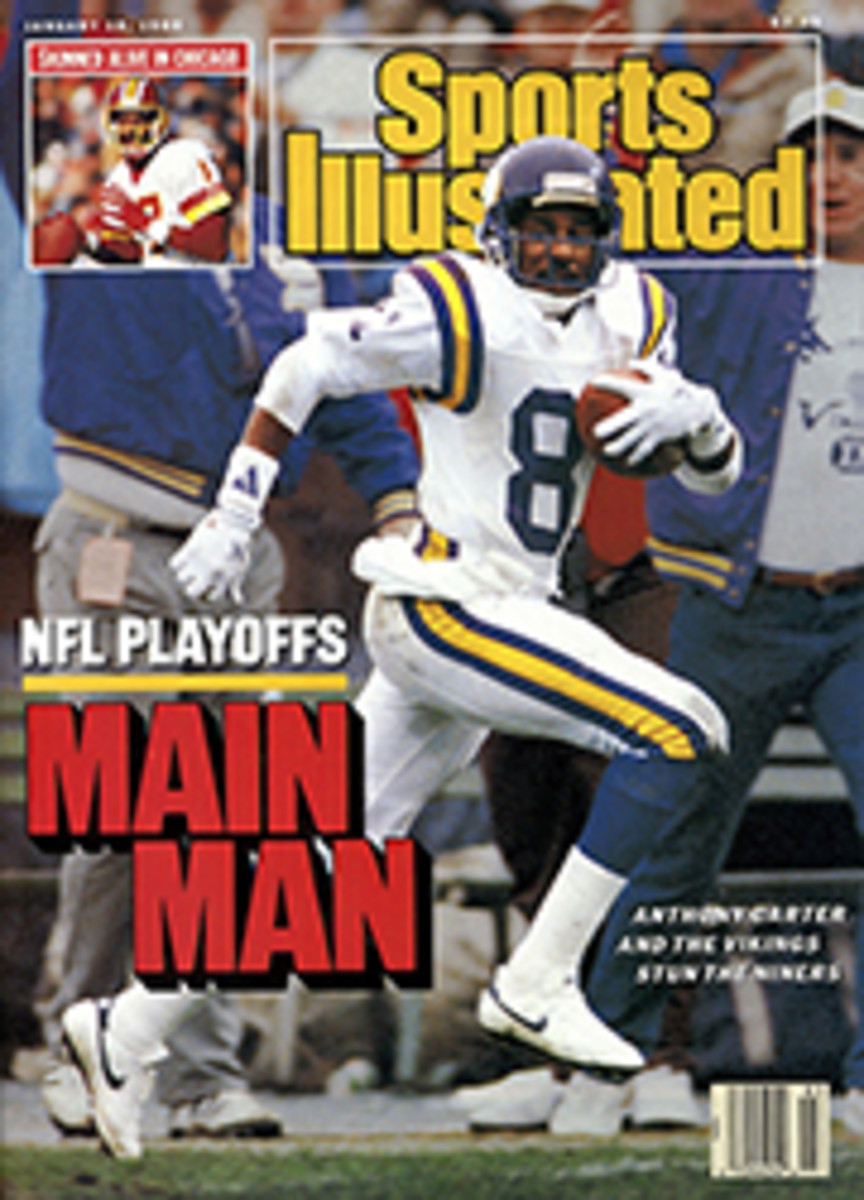
SCORECARD
A SINGULAR SHOWMAN
The news of Pete Maravich's death came on the afternoon of my younger daughter's sixth birthday. A time of joy, a celebration of youth, an annual ritual of family life. Youth. Joy. Celebration. All these were what the essential Pistol Pete was about. And, above all, family.
When Maravich first came whirling down the lane and into the national consciousness, it was from under the protective wing of an LSU coach who also happened to be his adoring father. When in the bitter closing days of his NBA career, he retreated from public life and friendships, he said, "My family is enough." And when he died of heart seizure last week at the age of 40, having only recently succeeded in his agonized search for peace and happiness, he was in California to appear on a Christian radio program entitled Focus on the Family.
Pistol Pete was special to me. He was the subject of the first cover story I wrote for SPORTS ILLUSTRATED—when he was a sophomore at LSU in 1968. More than that, he personified why I love basketball; why I enjoy watching it, writing about it; why sport itself is such an important part of human existence. Simply put, Maravich was terrific fun.
In the history of college basketball there have been other marvelously talented players—Wilt, Russ, Elgin, Big O, West, the Bird—but at the top of his game, when he was smoking out another outrageous 50-point night, absolutely nobody, no time, nowhere approached Maravich.
He was probably the most unusual team athlete of his time; certainly he was one of the most misunderstood. He was Cousy long after Cousy, and Magic even before Magic. An entertainer. The one-and-only. The star. As a Louisiana State senior he wrote an ST cover story headlined I Want to Put On a Show. But it was Pete's terrible misfortune always to be misplaced: He was an individualist in a team game, the white boy in the black man's game, the people's choice who in his increasing paranoia felt the people were against him.
Because he lost. Maravich always lost. "Raw-talentwise, he's the greatest who ever played the game," an Atlanta Hawks teammate—a black teammate—Lou Hudson, once said. "But always, no matter what he does, he will be a loser. That's his legacy. It never looked easy being Pete Maravich."
No man in sports engendered more diverse opinion. Coach Jack Ramsay: "A great player. Pete could adapt to whatever was necessary to win." Coach Pat Riley: "The most overrated superstar." When Marv Roberts, a refugee from the ABA, got his first look at Maravich's spectacular act, he leaped off the Laker bench pointing and shouting, "I sees ya, Pete, I sees ya."
Franchise player? There has been only one franchise unto himself in all of sport and his name was Maravich. His LSU teammates once wore AND COMPANY on their warmups. In the NBA there were 21 teams and one Pistol. He knew it, and he bore the burden. "We get beat at Phoenix by 43 and I get blamed," he once told me.
I wish Maravich could have stayed in college. Forever. "LSU was Tiger-town and lots of laughs," his brother Ronnie once said. "Then suddenly there was no Tigertown. Pete wasn't a hero anymore. When people got on him.... He's been shell-shocked ever since."
Those were the days after Pete's 10-year NBA career had ended in 1980, when Maravich's childlike imagination and zest for the game turned to cynical despair and he was forming his radical views on food, medicine and politics. He even painted a target on his roof so the extraterrestrials could find him and take him away. In his final few years, thankfully, he found God and lasting contentment with his wife, Jackie, and his two young sons. A biography had just been published. A movie about his life was in the works. He reconciled with his alma mater. "We welcomed him home," LSU athletic director Joe Dean said. "Pete had touched too many lives to stay away."
Mine was among them. What I'll remember is the Pistol throwing one in from 40 feet at the end of a game in Hawaii—he scored 40 points in the second half—and the defeated St. John's team rushing onto the court to embrace him. What I want to forget is the awkward time when he was estranged from the game.
When the news came last week, I cried at first. Then I twirled a ball on my fingertips and laid it into my daughter's basket. I still sees ya, Pete Maravich.
BUSINESS AS USUAL
SI's Steve Wulf had this to say about the New York Yankees' signing last week of free-agent slugger Jack Clark, late of the St. Louis Cardinals:
Many people immediately assumed that 1) the days of owner collusion were over, 2) the Yankees had bought themselves at least the American League East title, and 3) the Cardinals had been reduced to rubble.
The first of those conclusions—that the free-agent market is again wide open for business—is absurd. Clark signed a two-year deal with the Yankees for $1.5 million a year, with incentives that could yield another $500,000 per annum. The Cardinals reportedly offered him a two-year contract for $1.6 million a year, with a possible $550,000 in annual bonuses. So Clark's new contract is in keeping with the owners' guidelines: Offer no deals longer than two years, offer no more money than the free agent's old club is willing to spend. "Collusion is price-fixing, not location-fixing," says Gene Orza of the Players Association. "The numbers aren't competitive. They're orchestrated."
The second assumption—that the Yankees are now a lock for their division's crown—ignores the fact that New York is still in dire need of starting pitching. Manager Billy Martin will have a potent batting order of, Nos. 1 through 6—Rickey Henderson, Willie Randolph, Don Mattingly, Clark, Dave Winfield and Mike Pagliarulo—but his rotation looks like Rick Rhoden, Richard Dotson, Ron Guidry (who's coming off surgery), Tommy John (who's coming off his 44th birthday) and Lee Guetterman, a 6'8" soft-throwing lefthander. The Yankees didn't need much more offense. They went after the wrong Jack—they could have had Morris in either of the last two off-seasons.
As for the Cardinals, well, general manager Dal Maxvill said the day after Clark's signing, "The sun came up here today." St. Louis may have made an arrogant mistake by antagonizing Clark, but it has already begun talks with another man who wields a big bat, free-agent Bob Horner. And as Mets manager Davey Johnson, an indirect beneficiary of the signing, said, "One thing I've learned in managing is that [Cardinal manager] Whitey Herzog always finds a way."
When the talks with St. Louis stalled, Clark's agent, Tom Reich, turned to his friend George Steinbrenner—in the past, Reich has peddled Ed Whitson, Al Holland and Gary Ward to the Yankees. Clark says he was upset with the Cardinals for implying that he was not a good first baseman. "They said I was a one-dimensional player," he said. So now he moves to the Yankees, where he will be a one-dimensional DH.
Clark also said, "It didn't come down to money. It came down to pride and dignity and that stuff." Nice of Clark to associate Steinbrenner with pride, dignity and that stuff. Foolish, but nice.
THANKS, GUYS
In his farewell to a 7-8 season, Philadelphia Eagles coach Buddy Ryan had these words for the members of his 0-3 strike replacement team: "We busted our butts trying to coach those dumb jerks, but they just couldn't play football. We didn't have one guy that hung on in the league somewhere. That tells you something about them." As to his own accomplishment, Ryan said, "I'm going to give myself an A double-plus this year."
THEN THERE WERE EIGHT
Philadelphia Flyers defenseman Brad Marsh used to be one of a handful of NHL players who refused to wear helmets. Then in a game on Dec. 8 against the Boston Bruins, Marsh received hard, clean checks from Cam Neely and Ray Bourque that caused him to slam his head, first on the boards, then on the ice. Unconscious and convulsing, Marsh was taken to the hospital, where he was kept overnight.
Helmets were made mandatory in the NHL in 1979, but a grandfather clause exempts players who entered the league before June of that year. Marsh had admitted he was probably foolish to play helmetless but said he felt more comfortable without one. Since his return to the lineup before Christmas, Marsh, 29, has mended his ways. He now wears a helmet and says he will continue to do so for the rest of his career. A happy footnote to the story is that another of the league's helmet holdouts, Bruins right wing Willi Plett, 32, who witnessed Marsh's injury from the bench, also has donned headgear. The remaining 10 bareheaded NHL players would be well advised to follow suit.
PHOTO
In college, the Pistol was nonpareil.
PHOTO
BAILEY/ASSOCIATED PRESS
Jack Clark (left) had general manager Lou Piniella smiling. But why?
THEY SAID IT
•Lester Hayes, L.A. Raider corner-back, who shares the club record of 39 career interceptions with Willie Brown, now the Raiders' defensive backfield coach: "There are some individuals in silver-and-blackdom who would rather run a gantlet of pit bulls [while] wearing pork-chop underwear than see me break the record for interceptions by a Raider."
•Dave Righetti, New York Yankees pitcher, when his agent urged him to have fun, travel, go to Paris: "Why should I go there? I haven't even been to Maine."

